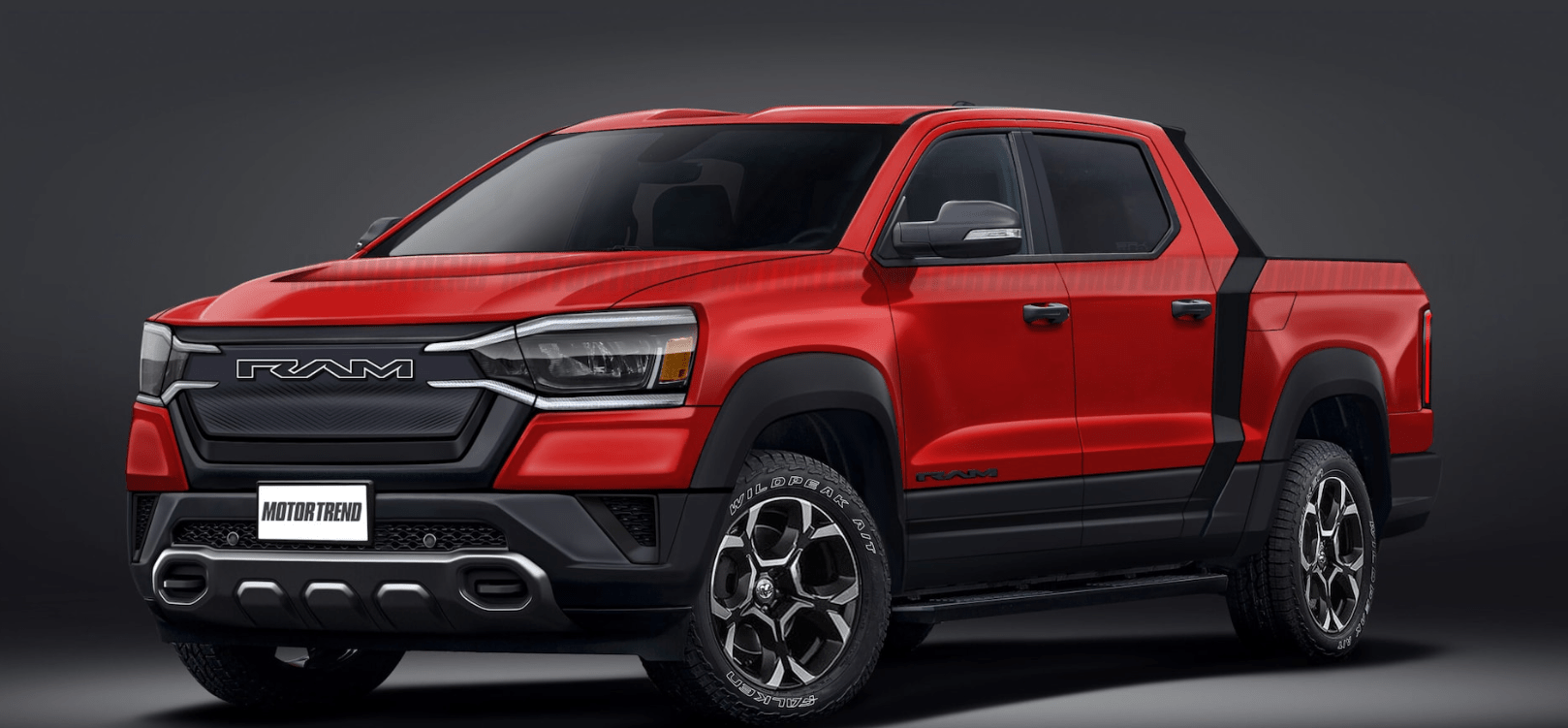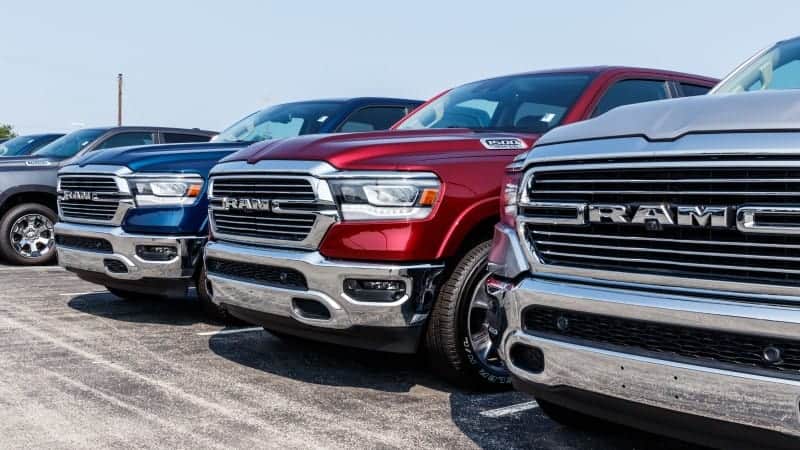Who Makes Ram Trucks sale.truckstrend.com
Ram Trucks, a name synonymous with power, capability, and rugged dependability, has carved out a significant niche in the highly competitive American pickup truck market. For years, the brand’s iconic horned emblem has adorned vehicles ranging from light-duty pickups like the Ram 1500 to heavy-duty workhorses and commercial vans. However, despite its prominent presence, a common question often arises among truck enthusiasts and the general public alike: "Who exactly makes Ram Trucks?"
The answer, while straightforward today, is rooted in a fascinating history of corporate evolution and strategic branding. This comprehensive guide will delve into the lineage of Ram Trucks, clarify its current manufacturing powerhouse, and explore the intricate processes and global operations that bring these formidable vehicles to life. Understanding the "who" behind Ram Trucks not only satisfies curiosity but also offers valuable insight into the brand’s future, its technological advancements, and the robust support system that stands behind every truck.
Who Makes Ram Trucks
The Short Answer: Stellantis
In the most direct terms, Ram Trucks is a brand of Stellantis N.V., a multinational automotive corporation that came into existence in early 2021 through the merger of two automotive giants: Fiat Chrysler Automobiles (FCA) and PSA Group. This formation created one of the world’s largest automakers, uniting a diverse portfolio of iconic brands under a single, powerful umbrella.
For Ram, being a part of Stellantis means access to a vast global network of resources, shared technologies, and immense financial backing, enabling it to continue innovating and competing at the highest level in the truck segment.
A Look Back: Ram’s Dodge Roots
To truly understand who makes Ram Trucks today, we must first journey back in time to its origins. For decades, the "Ram" nameplate was an integral part of the Dodge brand. From 1981, when Chrysler Corporation (then Dodge’s parent company) rebranded its truck line with the "Ram" name and the iconic ram’s head hood ornament, Dodge Ram trucks became a staple on American roads.
The Dodge Ram was celebrated for its robust build, powerful engines, and no-nonsense utility. However, as the pickup truck market grew increasingly specialized and competitive, Chrysler Group (which had undergone several ownership changes, including DaimlerChrysler and Chrysler LLC) recognized the need for a more focused approach.
In 2009, a pivotal decision was made: the Ram truck line was officially spun off from Dodge to become its own standalone brand, simply known as Ram Trucks. This strategic move allowed Dodge to concentrate on performance cars and SUVs, while Ram could dedicate all its resources, design, and marketing efforts solely to trucks and commercial vehicles. The aim was to foster a distinct brand identity for trucks, allowing Ram to directly challenge competitors like Ford’s F-Series and Chevrolet’s Silverado with a dedicated focus on truck buyers’ unique needs and preferences. This separation laid the groundwork for Ram’s growth into the formidable brand it is today, operating under the purview of its evolving parent company.
Understanding Stellantis: The Parent Company

The story of Ram Trucks’ manufacturer culminates with Stellantis. Formed on January 16, 2021, the merger of FCA (Fiat Chrysler Automobiles) and PSA Group (the French multinational manufacturer of brands like Peugeot, Citroën, DS, Opel, and Vauxhall) created Stellantis N.V. This strategic alliance was driven by the need for scale, shared investment in new technologies (like electrification and autonomous driving), and improved global market presence.
Stellantis is now a truly global automotive powerhouse, with operations across North America, South America, Europe, Africa, the Middle East, and Asia. Its brand portfolio is incredibly diverse, encompassing:
- American Brands: Chrysler, Dodge, Jeep, Ram, Mopar
- Italian Brands: Alfa Romeo, Fiat, Lancia, Maserati, Abarth
- French Brands: Peugeot, Citroën, DS Automobiles
- German Brand: Opel
- British Brand: Vauxhall

For Ram, being part of Stellantis means:

- Vast Resources: Access to significant capital for research and development, manufacturing upgrades, and global expansion.
- Shared Technologies: Ability to leverage common platforms, powertrains, infotainment systems (like Uconnect), and advanced driver-assistance systems (ADAS) developed across the Stellantis group.
- Global Reach: While Ram’s primary market remains North America, the global distribution and supply chain capabilities of Stellantis provide unparalleled support and potential for future market diversification.
- Economies of Scale: Reduced costs through bulk purchasing of components, optimized production processes, and consolidated operations.
Where Ram Trucks Are Made: Manufacturing Facilities
While the "who" is Stellantis, the "where" involves dedicated assembly plants primarily located in North America, reflecting Ram’s core market. Ram trucks are not simply designed in one place and built in another; their production involves a complex network of manufacturing facilities.
Key manufacturing plants for Ram Trucks include:
- Sterling Heights Assembly Plant (SHAP), Michigan, USA: This massive facility is the primary production site for the highly popular Ram 1500 light-duty pickup truck. It has undergone significant investments to modernize its operations and increase capacity, employing thousands of skilled workers.
- Saltillo Truck Assembly Plant, Coahuila, Mexico: This plant is crucial for the production of Ram Heavy Duty (2500/3500) pickup trucks, as well as the Ram ProMaster commercial van. Mexico’s strategic location and established automotive manufacturing infrastructure make it an ideal hub for these larger, more specialized vehicles.
- Warren Truck Assembly Plant, Michigan, USA: Historically, this plant has also played a significant role in Ram truck production, particularly for older generations and specific configurations. While SHAP handles the current-gen 1500, Warren Truck continues to be an important part of Stellantis’s North American manufacturing footprint.
These plants are equipped with advanced robotics, precision machinery, and rigorous quality control processes to ensure every Ram truck meets the brand’s demanding standards for durability and performance. The production process involves stamping body panels, welding frames, painting, final assembly of components (engine, transmission, interior, electronics), and extensive quality checks before vehicles are shipped to dealerships.
The Design and Engineering Process
The journey of a Ram truck from concept to completion is a testament to sophisticated design and engineering. Under Stellantis, Ram benefits from a dedicated team of designers, engineers, and product strategists who are deeply immersed in understanding the needs of truck buyers.
- Research & Development: Extensive market research, consumer feedback, and competitive analysis drive the initial conceptualization phase.
- Design: Ram’s design teams, often based at Stellantis’s North American headquarters in Auburn Hills, Michigan, create the distinctive styling, interior ergonomics, and functional features that define Ram trucks.
- Engineering: Engineers work on everything from chassis development and powertrain integration to advanced safety systems and cutting-edge infotainment. Collaboration within Stellantis allows Ram to leverage shared componentry and expertise, such as Uconnect systems, eTorque mild-hybrid technology, and advanced materials.
- Testing: Prototypes undergo rigorous testing in various conditions – from extreme cold to scorching heat, off-road trails to heavy-duty towing – to ensure durability, performance, and reliability.
This integrated approach, backed by Stellantis’s global R&D capabilities, ensures that Ram Trucks remain at the forefront of innovation, continuously pushing boundaries in areas like towing capacity, fuel efficiency, interior luxury, and connectivity.
The Benefits of Being Part of a Major Automotive Group
Being part of Stellantis offers Ram Trucks several distinct advantages that directly benefit the consumer:
- Enhanced Innovation: Access to a larger R&D budget and a wider pool of engineering talent allows Ram to invest in cutting-edge technologies like advanced powertrains (including electric vehicles), sophisticated safety features, and integrated digital experiences.
- Cost Efficiencies: Shared platforms, components, and global supply chains lead to economies of scale. This can translate into more competitive pricing for consumers or allow for more features to be included at a given price point.
- Global Best Practices: Stellantis brings together diverse manufacturing and business practices from around the world, fostering continuous improvement in quality, efficiency, and sustainability.
- Market Leadership: The combined strength of Stellantis allows Ram to maintain its aggressive pursuit of market share and leadership in the truck segment, competing effectively against other global giants.
- Future Resilience: In an rapidly evolving automotive landscape, being part of a financially robust and strategically agile group like Stellantis provides stability and ensures long-term viability for the Ram brand.
Future Outlook for Ram Trucks under Stellantis
The future for Ram Trucks under Stellantis is clearly focused on innovation, particularly in the realm of electrification. Ram has already announced ambitious plans, including the highly anticipated Ram 1500 REV, its first battery-electric pickup truck, slated for production in 2024. This move underscores Stellantis’s commitment to electrifying its portfolio and positions Ram to compete directly in the emerging electric truck segment.
Beyond electrification, expect Ram to continue its focus on:
- Capability: Enhancing towing, hauling, and off-road prowess.
- Technology: Integrating more advanced infotainment, connectivity, and driver-assistance systems.
- Luxury & Comfort: Elevating interior design, materials, and ride quality to maintain its reputation for premium truck experiences.
- Commercial Vehicles: Expanding its ProMaster and chassis cab offerings to serve the diverse needs of businesses.
Practical Advice and Actionable Insights
For consumers, understanding who makes Ram Trucks offers several practical benefits:
- Brand Confidence: Knowing that Ram is backed by a global automotive powerhouse like Stellantis provides reassurance regarding the brand’s long-term stability, access to parts, and service network.
- Technological Assurance: The shared technological advancements within Stellantis mean Ram trucks benefit from cutting-edge features and engineering solutions developed across the entire group.
- Warranty & Support: Your Ram truck’s warranty and service network are supported by the vast resources of Stellantis, ensuring comprehensive coverage and professional assistance.
- Future-Proofing: Stellantis’s strategic investments in electrification and sustainable mobility indicate that Ram will continue to evolve with industry trends, offering relevant and advanced vehicles for years to come.
Concluding Summary
In conclusion, the question "Who Makes Ram Trucks?" finds its definitive answer in Stellantis N.V. While Ram’s rich heritage is deeply intertwined with Dodge, its strategic separation in 2009 laid the groundwork for its current identity as a dedicated truck brand. The subsequent formation of Stellantis through the merger of FCA and PSA Group solidified Ram’s position within one of the world’s largest and most diversified automotive conglomerates.
From its primary manufacturing hubs in Michigan and Mexico to its global design and engineering capabilities, Ram Trucks benefits immensely from the vast resources, shared technologies, and strategic vision of Stellantis. This robust backing ensures that Ram will continue to produce powerful, innovative, and reliable trucks, firmly maintaining its competitive edge in the evolving automotive landscape.
Key Information on Ram Truck Manufacturing & Ownership
| Aspect | Detail/Information |
|---|---|
| Current Parent Company | Stellantis N.V. |
| Formation of Stellantis | January 16, 2021 (Merger of Fiat Chrysler Automobiles (FCA) and PSA Group) |
| Ram Brand Spinoff | 2009 (from Dodge, then part of Chrysler Group LLC) |
| Primary Manufacturing (US) | Sterling Heights Assembly Plant (SHAP), Michigan (Ram 1500); Warren Truck Assembly Plant, Michigan |
| Primary Manufacturing (Mexico) | Saltillo Truck Assembly Plant, Coahuila (Ram Heavy Duty, Ram ProMaster) |
| Key Design & Engineering Hubs | Auburn Hills, Michigan (Stellantis North America Headquarters & Technical Center) |
| Key Benefit of Parent Company | Access to global R&D, shared platforms, advanced technology integration, economies of scale, global supply chain. |
| Ownership Structure | Publicly traded multinational corporation. |
| Focus of Ram Brand | Pickup Trucks (Light-Duty, Heavy-Duty) and Commercial Vans |
| Future Direction | Significant investment in electrification (e.g., Ram 1500 REV), continued focus on capability and technology. |
Frequently Asked Questions (FAQ)
Q1: Is Ram still a Dodge?
A1: No, Ram became its own standalone brand in 2009, separating from Dodge. While both are now part of Stellantis, they operate as distinct brands with separate product lines and marketing strategies.
Q2: What is Stellantis?
A2: Stellantis N.V. is a multinational automotive manufacturing corporation formed in 2021 through the merger of Fiat Chrysler Automobiles (FCA) and PSA Group. It is one of the world’s largest automakers, encompassing brands like Ram, Jeep, Dodge, Chrysler, Fiat, Peugeot, Citroën, Alfa Romeo, and Maserati.
Q3: Are Ram trucks made in America?
A3: Many Ram trucks, particularly the popular Ram 1500, are primarily assembled in the United States, notably at the Sterling Heights Assembly Plant in Michigan. However, some models, like the Ram Heavy Duty trucks and ProMaster vans, are assembled in Mexico. Components for all vehicles often come from a global supply chain.
Q4: Who owns Chrysler, Dodge, and Jeep?
A4: Chrysler, Dodge, and Jeep are all brands owned by Stellantis N.V. They were previously part of Fiat Chrysler Automobiles (FCA) before the merger with PSA Group formed Stellantis.
Q5: Does Ram make its own engines?
A5: Ram does not "make" its own engines in isolation. Engines used in Ram trucks, such as the HEMI V8, Pentastar V6, and Cummins diesel engines, are designed and manufactured by various entities within the Stellantis ecosystem or through long-standing partnerships (like Cummins for the diesel engines), then integrated into Ram vehicles.
Q6: What is the future of Ram Trucks?
A6: The future of Ram Trucks under Stellantis involves significant investment in electrification, with the Ram 1500 REV (battery-electric vehicle) being a key upcoming model. Ram will also continue to focus on enhancing capability, integrating advanced technology, and refining interior luxury across its truck and commercial vehicle lineup.




